60 garden sheds are broken into every day. This research studied households in England and Wales, showcasing the shocking increase in outbuildings theft. Based on our experience, outbuilding theft is becoming an increasing issue for sports and social clubs, too. But why do thieves target outbuildings, and what can be done to prevent this?
What is an outbuilding?
An outbuilding is a separate structure that belongs to a main building. Common outbuildings include a shed, clubhouse, changing facilities or a pavilion.
Sports and social clubs often use outbuildings as additional storage space for bulky tools or equipment. Most organisations are short of physical space, so a secondary building is an ideal place to store larger items. However, these items are often quite pricey and can be particularly attractive to thieves. And, because the buildings are a little less visible compared to main premises, it makes them a potential target for thieves.
Is a shed classed as an outbuilding?
Yes. A shed is classed as an outbuilding if it doesn’t require planning permission to build (aka, it’s single storey, no more than 4m tall with a dual pitched roof and is no nearer than 2.5m to the main building). Sheds or outbuildings are classified as an “accessory dwelling” if they are used as a living space (with a kitchen, bathroom and a bedroom) rather than as a storage area.
Sometimes sheds can be small or temporary structures, but they’re still classed as an outbuilding, no matter their purpose.
Why do thieves target outbuildings?
There are a number of reasons why thieves break into sheds or outbuildings:
- Expensive equipment is stored there
- The outbuildings are often less secure than the main premises
- There is less visibility of a shed or outbuilding, making them easier targets
- Outbuildings are frequently left unattended / not monitored
Outbuilding thefts can happen all year round. In summer months, days are longer and this gives thieves more opportunity to steal during daylight hours. On the other hand, clubs such as cricket clubs are more widely visited during the summer months. This gives thieves a greater opportunity of success when the winter sets in, as there are potentially less people visiting the club and using the outbuilding.
Common outbuilding thefts
Not many thieves are interested in stealing a few basketballs or a football net. Sports and social clubs store several valuable items in outbuildings.
Groundskeeping equipment and machinery are the most desirable items kept in outbuildings. For example, commercial lawn mowers can cost well over £5,000. An intruder would be able to sell the mower on for thousands. Even items such as a ground marker can be worth hundreds.
The impact of theft
Clubs need important equipment (much of which is kept in an outbuilding) in order to keep running.
The impact of significant theft, therefore, can be devastating. Even if your club has adequate insurance cover, it can be a good length of time before the pay out enables you to purchase new equipment. You’ll also be required to pay excess, which will vary depending on your policy.
The inconvenience, upset and expense of an outbuilding break-in should not be underestimated.
How to secure a shed or outbuilding?
Outbuildings should be treated in the same manner as your main premises when it comes to security. To prevent theft, you must think like a thief. Identify weak spots that could be targeted. How and where would a criminal enter your premises, and how could they break into your outbuilding? Answering these questions thoroughly will help you to discover which areas in your premises need additional security.
There’s a rise in sports clubs using steel shipping containers for machinery storage. Providing they have closed shackle padlocks, this can be a great way to secure equipment and prevent theft. Steel shipping containers don’t rot or mould as wood would and can hold plenty of heavy equipment – making them strong, weather proof storage containers.
Your insurer will require you to have minimum security provisions as part of your policy. Make sure you check your Policy Wording document and comply with their stipulations as a minimum. For example, your insurer may require you to have a professional security system or specific locks. A security firm will be able to provide advice on the most effective alarm systems for your club, and offer other security recommendations.
Top tips for securing an outbuilding include:
- Always lock the outbuilding. You should also consider locking the outbuilding even when you’re using it
- Install an alarm system
- Consider security marking, which will prevent thieves from taking property that could later be identified as stolen. If you do mark your property, make sure you advertise that they are marked – this will act as a strong deterrent!
- Install external security lighting, which should be automatically operated if possible
- Consider installing CCTV
- If your outbuilding has windows, make sure the window frames are in good conditions and use window locks. You could also replace outbuilding windows with Perspex / reinforced glass or fit window grills
- Use nature to your advantage. Keep hedges near the outbuilding low so a thief is more likely to be spotted and grow shrubbery that is harder to climb through or clamber over
- Make an intruder’s job harder. Keep items such as bins tucked away so they can’t be used as a way to climb over fences, hedges or walls
- Use a chain or immobaliser to secure valuable items such as tools, machinery or equipment to a ground anchor. You should also lock away all equipment and machinery immediately after use
- Consider purchasing closed shackle padlocks for your shed – most insurers will require two locking points
- Where possible, lock tools in a secure metal cabinet within the shed
- Keep an asset register, to include anything of value. Not only will this help ensure your Sums Insured is adequate but it will also help you to evidence items stolen in the event of a claim. An asset register should include a list of items, when they were purchased, purchase price, replacement price, serial numbers and, if possible, a photo of the item. This will help identify what has been taken during a theft and will help demonstrate to your insurer that you have stayed within the limits of your policy
- Take photographs of all valuable machinery and equipment kept in your shed. This will help police identify and retrieve them if a theft occurs
Is your outbuilding adequately insured?
Your outbuilding may not be automatically covered by your Material Damage or Machinery insurance. Speak to your insurer or broker to make sure your outbuilding is covered as part of your policy.
Make sure you insure your outbuilding for the right amount. As with any building or contents insurance, you should have an accurate valuation in order to correctly calculate your Sums Insured. The valuation should be based on the cost of replacing an item as new, not its current second-hand value. Check your limits with your insurer, so you know the maximum number and value of items you can keep in your outbuilding.
You should also look out for any exclusions in your policy. Some insurers will exclude extremely expensive individual items, which could be seen as a target and thus increase risk of theft. With this in mind, always let your insurer know about individual valuable items being kept in your outbuilding.
Insure your club with Club Insure!
We’re a specialist insurance broker to the leisure and hospitality industry. Our team work with a wide range of clubs and organisations, so we know the cover you’ll need. To make sure you’re protected for outbuilding thefts, get in touch.







